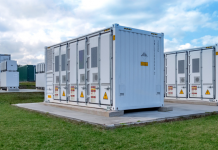 Industry is starting to realise single purpose ‘disposable’ batteries are sub-optimal, believes redT CEO Scott McGregor
Industry is starting to realise single purpose ‘disposable’ batteries are sub-optimal, believes redT CEO Scott McGregor
The Capacity Market is suspended and under review, the Firm Frequency Response market is saturated, and Triads are now also under review in an attempt to make energy pricing fairer. The question on industry lips is: ‘What next?’
Despite what you might have read elsewhere, we view these developments positively. Energy storage is finally leaving a kindergarten world of single-purpose, disposable assets used to gamble on markets built on short-term energy policies with often unintended consequences.
Instead, we will see a rapid roll-out of what we call energy storage 2.0 – ‘proper’ energy infrastructure, which cycles hard, every day, in order to provide meaningful flexibility to our energy system to create a network that’s not only smarter and more stable, but cheaper and greener too.
We firmly expect the Capacity Market or an equivalent value stream for heavy cycling energy storage assets to return, but in the short-term, we also view volatility as presenting numerous opportunities.
Looking at the bright side of volatility
Volatility in the wholesale energy market has become a fact of life since the Capacity Market suspension and we expect this to continue over the next year or two. With fluctuating energy prices come challenges but also large opportunities for customers using flexible energy storage infrastructure to take control of their energy procurement, avoiding the highs and targeting the lows in energy pricing throughout the day.
Heavy cycling flexible energy storage assets like flow machines can work around the clock to take advantage of the full range of energy purchase options and cut costs as a result. They can also be used to generate upside by trading on the wholesale energy markets or by providing ancillary services like frequency response. Unlike conventional lithium-ion batteries, flow machines can be heavy cycled continuously throughout the day, store large amounts of energy, do not degrade with use and have a lifespan of more than 25 years.
Though currently dormant in the European Court of Justice, the Capacity Market de-rating factor of 96% for flow machines – the same as pumped hydro – highlights the clear advantage of heavy cycling energy storage assets over traditional battery alternatives.
Out with the old, in with the new
This emerging landscape shows the ‘old’ merchant business model for lithium batteries, based on low utilisation and single revenue stream gambling, is at best a side show to the future of energy storage.
Real value can be found in enabling commercial and industrial scale energy users to take far greater control of their energy procurement strategies in order to benefit from price volatility. This translates into large cost savings at low risk for businesses where electricity costs make up a large proportion of their operating costs.
Looking forward, with the roll out of ‘energy storage 2.0’ enabling more and more cheap renewables to come online, we anticipate the wholesale price of energy will regularly fall to or below zero for large parts of the day by 2030. At redT we are developing economic models to optimise this new norm, and a Capacity Market revamp will only serve to offer a further, valuable upside to the new business model.
The era of single-purpose batteries is dead. Time to do energy storage properly.
Related stories:
Energy storage ‘will wipe out’ battery storage
RedT turns on 1MWh flow-lithium hybrid
Anglian Water takes 300kWh of flow storage, plans 30MW of solar
RedT hopes to pull off 60MWh Germany storage deal
RedT boss: Firms banking on FFR are “gambling”
RedT and Centrica connect 1MWh flow machines in Cornwall
Follow us at @EnergystMedia. For regular bulletins, sign up for the free newsletter.



